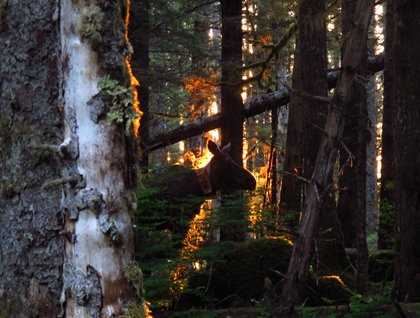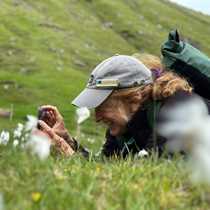Glacier Bay National Park is a place like nowhere else. We set out to explore Glacier Bay National Park from Bartlett Cove, near the mouth of the bay. Ranger J.T. McLaughlin and Huna Tlingit cultural interpreter Faith Grant, both of who greatly enriched our understanding and appreciation of the park, joined us for the day on National Geographic Sea Bird.
We approached South Marble Island as breakfast ended. With binoculars and cameras handy, we made a very slow cruise by this important seabird colony and Steller sea lion haul out. In addition to hundreds of fun-to-watch sea lions, we spotted sea otters, tufted puffins, common murres, black-legged kittiwakes, bald eagles, and much more. Adding to the scene were at least four humpback whales.
Making our way up the west arm of Glacier Bay, enjoying the stunning scenery and watching for wildlife, we headed towards Marjorie Glacier. Mountain goats! Those amazing climbers that seem to be able to climb what appear to be unclimbable cliffs. A brown bear strolled the shoreline of Tidal Inlet. More mountain goats, nannies, and frolicking kids were easily seen on Gloomy Knob. As we came closer to Marjorie Glacier, the vegetation became sparser. Another brown bear was walking the shoreline near the Russell Cut. Now, ice was becoming thicker as we navigated through Tarr Inlet, towards the Grand Pacific and Marjorie Glaciers. Picking our way carefully through the ice, we parked in front of the glaciers to take in the majestic vistas.
Eventually, we began the 65-mile journey down bay. As if on a trip through time, we went from the bare rock landscape around the glaciers, through the transition zones with alder and cottonwood trees, to the dense Sitka spruce—western hemlock at Bartlett Cove, near the mouth of Glacier Bay. An after-dinner stroll topped off a magical day in one of the gems of our national park system.
The sun out all day
The humpback whales are breaching
Ducks are flying low Avery Onan, age 11









